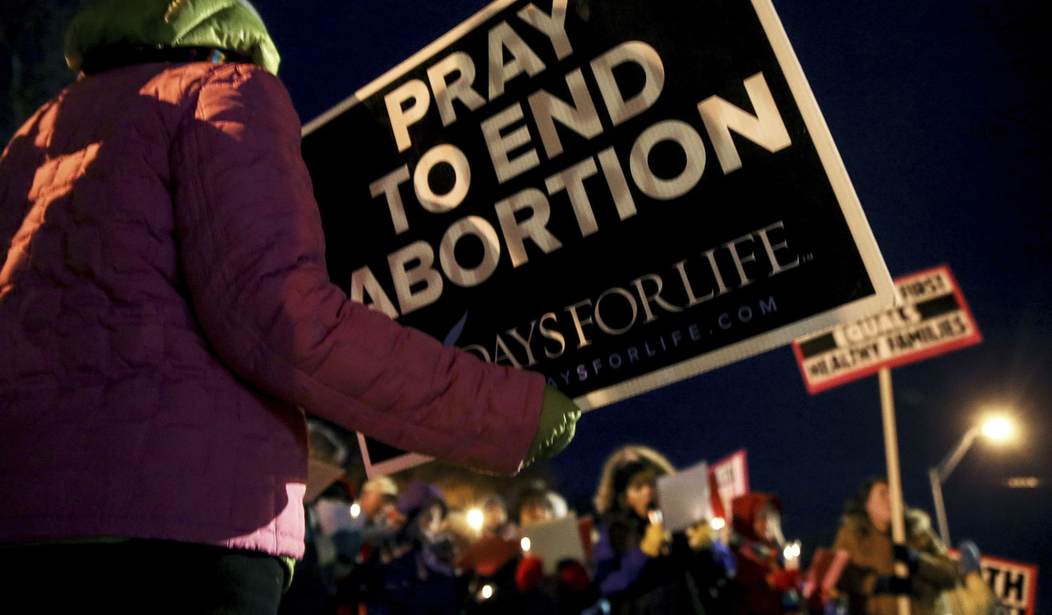On Nov. 30, 2017, decision-makers at the National Institutes of Health made a profound error. They executed an option to extend for one year a federal contract that will pay the University of California, San Francisco $2,018,293 this year alone.
That contract is called Humanized Mouse Models for HIV Therapeutics Development, and it requires UCSF to obtain human fetal tissue from aborted babies to transplant into mice.
The NIH, I reported on CNSNews.com, published the official solicitation for this contract on Dec. 31, 2012. It stated the contractor would be required to "obtain human fetal tissue."
Why would a federal government institution -- the NIH -- make a contract with a state government institution -- UCSF -- that required the state institution to obtain human fetal tissue?
The solicitation noted that the contract the NIH intended to sign in 2013 would continue and augment work that UCSF was then doing under a previous NIH contract.
That previous contract required UCSF to make one type of "humanized mouse" using human fetal tissue. The new contract would require UCSF to make at least two types of "humanized mice" -- both using human fetal tissue.
"The current contract was awarded in 2006 to the University of California, San Francisco (contract number HHSN266200700002C) and will expire in December, 2013," the solicitation explained.
"The animal model being used is an immunodeficient mouse engrafted with human fetal thymus and liver (severe combined immunodeficiency (SCID)-hu Thy/Liv) and infected with well-characterized isolates of HIV-1," it said.
Recommended
"This solicitation is seeking proposals for the SCID-hu Thy/Liv model and for a second humanized mouse model," it said. "The second mouse model will consist of immunodeficient mice engrafted with human fetal thymus and liver tissue and other cells and/or tissues, such that the model (or mice) has the following characteristics: can be infected by the systemic and mucosal routes, reconstitutes gut-associated and other lymphoid tissues, and develops viremia and disseminated infection in engrafted human tissue."
"In summary," it said, "the present solicitation is for the SCID-hu Thy/Liv model and for an additional humanized mouse model."
These mice cannot be created with tissue from babies aborted early in pregnancy or from miscarriages.
The UCSF researcher, who has been the principle investigator for both the previous and current UCSF "humanized mouse" contracts, spoke in 2007 at the NIH New Humanized Rodent Model Workshop.
The AIDS Research and Therapy journal published a summary of the researcher's presentation that indicated they used "Human fetal liver and thymus (20-24-g.w.)" to make the "SCID-hu Thy/Liv model" mouse.
An unborn child at 24 gestational weeks has started its sixth month of life.
As this column has previously noted, Harvard University provided the House Energy and Commerce Committee with a background paper explaining why the fetal tissue used to make these mice must come from aborted babies -- not miscarriages.
"Here, timing is very important," Harvard said. "Almost all miscarriages happen at home or in locations in which fetal material is not recovered and, importantly, preserved in a usable state."
The NIH solicitation for the 2013 contract, which like its precursor was awarded to UCSF, said: "The Contractor shall provide both kinds of humanized mice."
The solicitation said of the first type of humanized mouse: "One cohort of up to 50 SCID-hu Thy/Liv mice per month engrafted with tissue from a single" -- human fetal - "donor, shall be available for evaluations."
It said of the second type of humanized mouse: "One cohort of up to 40 mice per month, engrafted with tissue from a single" -- human fetal -- "donor, shall be available for evaluations."
On Feb. 27, 2017, a group of researchers from UCSF published an article in the journal Pathogens describing a type of mouse they created in research funded by the contract.
"Fetal gut tissues (18-24 g.w.) were obtained from women with normal pregnancies before elective termination for nonmedical reasons with informed consent according to local, state, and federal regulations," they wrote. "Single intact segments of human fetal intestine (2-3 cm in length) were transplanted subcutaneously on the back of 6-8-week-old male C.B17 scid mice."
The NIH solicitation said this "humanized mouse" contract would have an initial "performance period" running from Dec. 6, 2013, to Dec. 5, 2014. The NIH would then have the option to extend the contract for six one-year periods running through Dec. 5, 2020.
The Federal Procurement Data System and USASPENDING.gov indicate that NIH did execute the first four option years -- with the latest running through this Dec. 5.
So far, this contract, which creates a demand for human organs taken from aborted babies, has paid UCSF $9,554,796 in federal tax dollars, according to FPDS. If the NIH chooses to continue it through 2020, it will pay UCSF a total of $13,799,501.
The question now: Will the leaders of NIH once again choose that option for spending federal tax dollars?
Terence P. Jeffrey is the editor in chief of CNSnews.com.























Join the conversation as a VIP Member